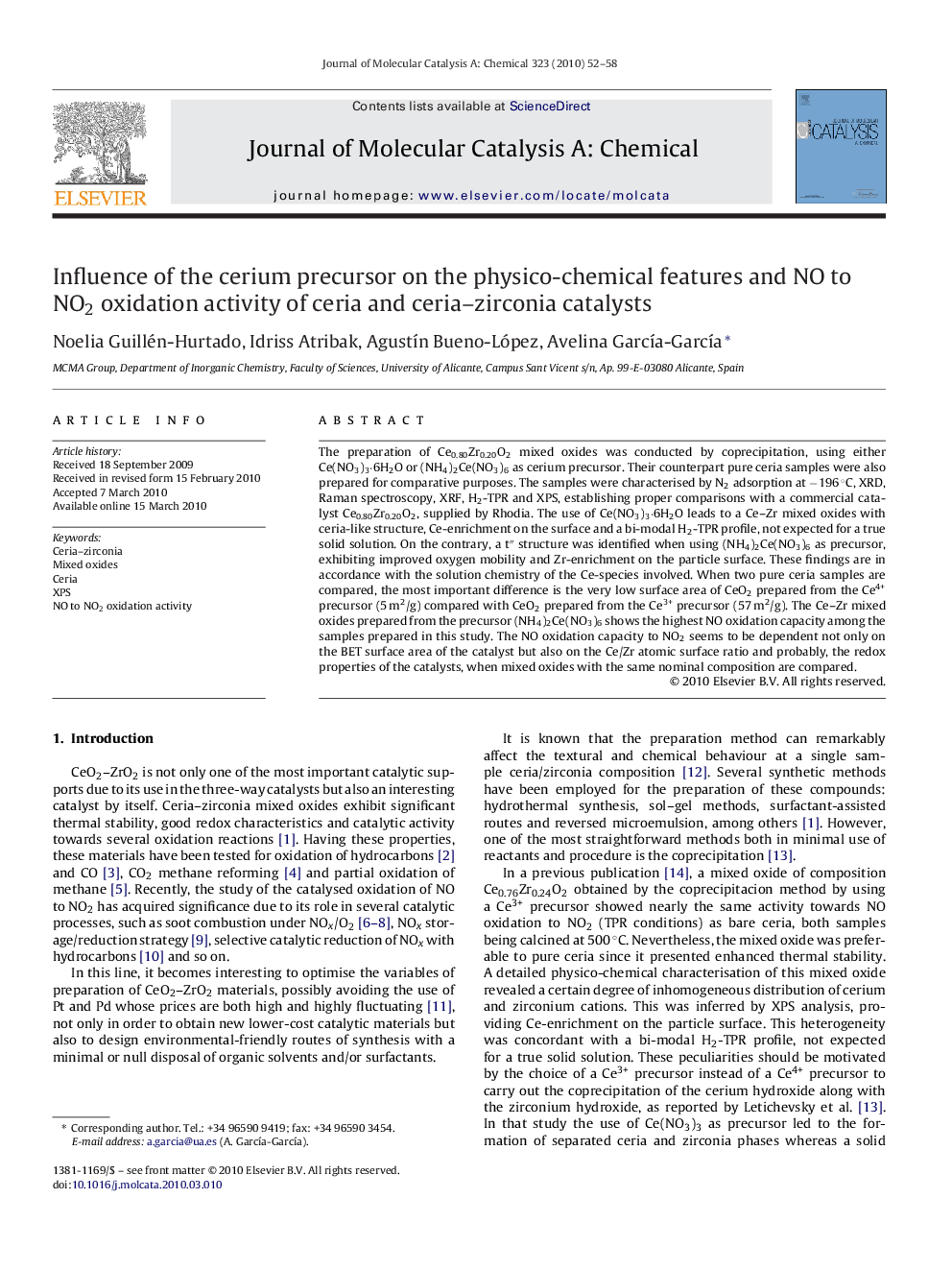| کد مقاله | کد نشریه | سال انتشار | مقاله انگلیسی | نسخه تمام متن |
|---|---|---|---|---|
| 66805 | 48451 | 2010 | 7 صفحه PDF | دانلود رایگان |

The preparation of Ce0.80Zr0.20O2 mixed oxides was conducted by coprecipitation, using either Ce(NO3)3·6H2O or (NH4)2Ce(NO3)6 as cerium precursor. Their counterpart pure ceria samples were also prepared for comparative purposes. The samples were characterised by N2 adsorption at −196 °C, XRD, Raman spectroscopy, XRF, H2-TPR and XPS, establishing proper comparisons with a commercial catalyst Ce0.80Zr0.20O2, supplied by Rhodia. The use of Ce(NO3)3·6H2O leads to a Ce–Zr mixed oxides with ceria-like structure, Ce-enrichment on the surface and a bi-modal H2-TPR profile, not expected for a true solid solution. On the contrary, a t″ structure was identified when using (NH4)2Ce(NO3)6 as precursor, exhibiting improved oxygen mobility and Zr-enrichment on the particle surface. These findings are in accordance with the solution chemistry of the Ce-species involved. When two pure ceria samples are compared, the most important difference is the very low surface area of CeO2 prepared from the Ce4+ precursor (5 m2/g) compared with CeO2 prepared from the Ce3+ precursor (57 m2/g). The Ce–Zr mixed oxides prepared from the precursor (NH4)2Ce(NO3)6 shows the highest NO oxidation capacity among the samples prepared in this study. The NO oxidation capacity to NO2 seems to be dependent not only on the BET surface area of the catalyst but also on the Ce/Zr atomic surface ratio and probably, the redox properties of the catalysts, when mixed oxides with the same nominal composition are compared.
The preparation of Ce0.80Zr0.20O2 mixed oxides was conducted by coprecipitation, using either Ce(NO3)3·6H2O or (NH4)2Ce(NO3)6, as cerium precursor. The samples were characterised by N2 adsorption at −196 °C, XRD, Raman spectroscopy, XRF, H2-TPR and XPS and the structural differences found as well as their NO to NO2 oxidation capacities were discussed.Figure optionsDownload high-quality image (111 K)Download as PowerPoint slide
Journal: Journal of Molecular Catalysis A: Chemical - Volume 323, Issues 1–2, 17 May 2010, Pages 52–58